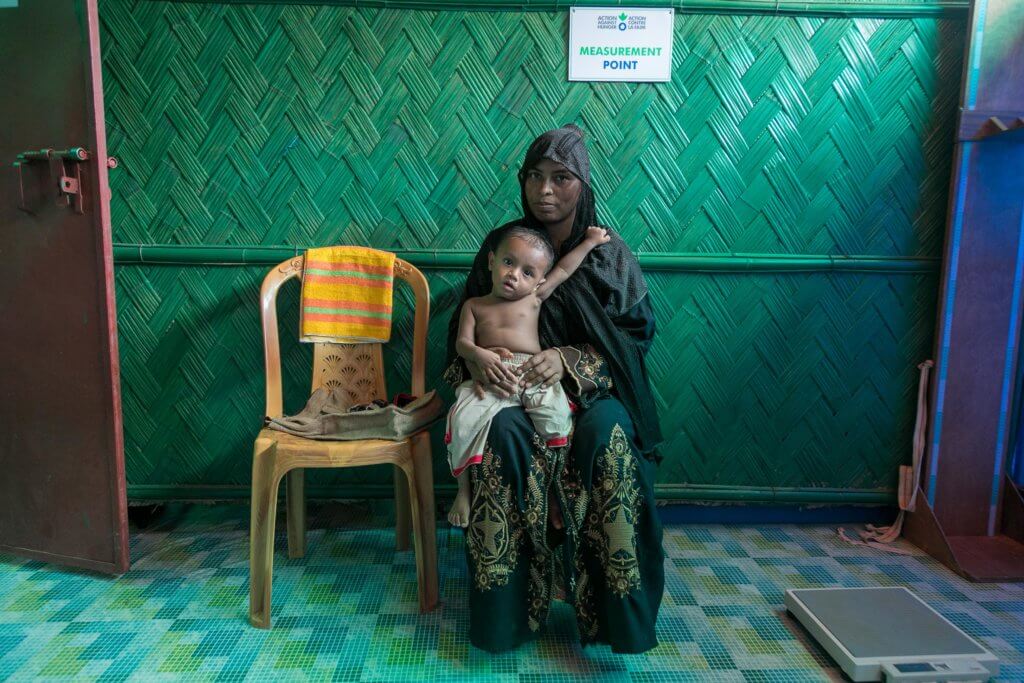A Better Resolution for the New Year: Set Attainable Goals
The year 2020 finally drew to a close, with muted celebrations and a collective sigh of relief. Although the challenges of the Covid-19 pandemic and the economic devastation it has wrought are far from over, the new year nonetheless provides a glimmer of hope and the opportunity to resolve, yet again, to do more and do better.
As the CEO of a grantmaking foundation that seeks to make a meaningful difference in the lives of the world’s poorest people by multiplying the impact of high-performing leaders, I have a strong professional interest in the science of setting and achieving goals. Indeed, it is a topic in which I have recently been immersed, in part through research that I have conducted with my colleague Maya DiRado Andrews, an Olympic gold medalist. It is also top-of-mind as our sector marks the one year anniversary of the death of Sir Fazle Hasan Abed, the founder of BRAC, who used rigorous goal setting to transform the organization he started into one of the largest, most effective nonprofits in the world.
While disciplined and effective goal setting is critical to our social sector even in “normal” times, it is especially critical during this extended pandemic period in which we face rapidly escalating needs; the necessity to reinvent delivery models; a challenging fundraising environment; and unprecedented levels of uncertainty. If ever there were a time to eschew overly-broad and open-ended ambitions like “end global poverty” in favor of realistic, measurable, and attainable goals that will truly help bring extreme poverty to an end, this is it. For guidance in so doing, I highly recommend the example of top athletes who daily push themselves to achieve more. Indeed, as my Olympian colleague and I have discovered, organizational leaders who excel at their jobs—including such high-performing social sector leaders as the late Sir Fazle—exhibit many of the same qualities that top athletes use to summon peak performance in their field.
Sir Fazle Hasan Abed, Founder, BRAC
BRAC
First and foremost, they set goals that are specific and measurable. Indeed, a lack of specificity is the main reason that, while goal setting is pervasive in our culture, goal achievement is rare. The classic example of this is, of course, New Year’s resolutions, which fewer than two percent of those who set them manage to fulfill. That’s because these resolutions tend to be vague and amorphous, lacking in specificity, urgency, and context: Lose weight! Exercise more! Be a better person! The right goal, by contrast, focuses on improvement over time—on achieving what athletes call their “personal best”—rather than comparison with other people or organizations.
High-performing athletes further cite two common themes in their specific approaches to goal setting. First, they rely on the incredible power of incremental goals—the power of focusing proactively and explicitly on short-term (even daily) objectives. Second, they ensure they will achieve these goals by setting reasonable expectations—an especially critical point for beginners or novices. So, while the ultimate goal may be an Olympic gold medal, or an end to poverty in a particular place, the incremental goals are clear, measurable, and down-to-earth. High-performing people, be they athletes or social sector leaders, set goals that are:
– Specific. The more specific the goal, the more effective it will be as a mechanism to improve performance. A useful goal is binary in outcome, with no room for ambiguity—either it was achieved, or it wasn’t.
– Feedback-driven. Feedback is crucial to the goal-setting process. A goal that is theoretically measurable is better than a goal that is impossible to measure. An easily measurable goal, which works with immediate or near-immediate feedback, is even better. Cultivating a voracious appetite for feedback helps ensure that all existing feedback mechanisms are utilized and that better, more accurate mechanisms are developed when needed.
– Self-referential. A self-referential goal is one that depends on your own actions, or those of your organization, and not on comparisons with others. “Control the controllables” is a common refrain in sports that also applies to non-athletic contexts. Indeed, the underlying concept forms the essence of the “serenity prayer” used in 12-step programs. Controlling things that you can control is essential to effective goal setting.
– Chunkable. Even the best, most specific goals need to be broken down into digestible chunks. The more complex the task, the more important “proximal,” or near-term, goals become to maintaining motivation. Research shows that in dynamic situations (read: almost everything in life), performance errors are often due to an inadequate breakdown of a complex task into intermediate or short-term goals.
BRAC’s founder, the late Sir Fazle Hasan Abed, was a master of this sort of goal setting and used it to positively impact the lives of countless people.
Born into a comfortable family in what is now Bangladesh, Abed held a plum job as head of finance for Shell Oil in 1970—the year that the deadliest tropical cyclone ever recorded hit his country and killed nearly half a million people. Struck by the suffering he saw, Abed loaded supplies onto a boat and went to help people on the country’s worst-hit offshore islands. What he saw forever changed his life, as he said in a 2014 interview conducted at Harvard Business School: “The scene was just horrendous—bodies strewn everywhere—humans, animals, everything. That shocked me to an extent that I felt that the kind of life I led hardly had any meaning in a kind of context in which these people lived—the fragility of life of poor people.”
BRAC’s founder, the late Sir Fazle Hasan Abed, used goal setting to positively impact the lives of countless people.
BRAC
Abed immediately started an organization to help cyclone survivors. Just a short time later, the Bangladesh Liberation War broke out; hundreds of thousands of people died, and ten million refugees fled to India. When the war ended in December 1971, the refugees began returning to a newly independent Bangladesh that was in shambles. Once again, Abed set out to help. He quit his job at Shell at the war’s outbreak, sold a small flat he owned in London, and created BRAC. His goal was always large. “Everything we did in Bangladesh we did with one focus: getting poor people out of poverty because we feel that poverty is dehumanizing,” Abed told The Guardian in 2015.
But Abed and his colleagues always broke down the large goal of liberating people from poverty into specific, measurable chunks. In the aftermath of the war, for example, he targeted 200 villages in one region and set a very clear, self-referential goal that he hoped donors would support. “I told them, the first year, we’ll just build homes, keep the children alive, if we can, by distributing high-protein food, and help the farmers till their land,” Abed recalled. In just nine months, BRAC built 16,000 homes. It then went on to help people in this same region with agriculture, water, sanitation, hygiene, and more, adopting an integrated approach to poverty alleviation that was always driven by feedback and measurement. When Abed retired from BRAC in 2019, executive director Asif Saleh wrote a tribute that noted his ability to set and achieve goals:
‘Small is beautiful, large is essential’—that was a mantra, that became part of BRAC DNA. He set targets that required a lot of courage and boy he delivered on all of them! From going to every single household in Bangladesh to teach mothers how to make oral rehydration saline, to covering half the country with latrines, to ensuring social protection for millions of ultra-poor, he was very clear in setting lofty targets in solving social problems. But there was also a clarity that he could convey in how to achieve those targets which made it look easier and much simpler than it actually was. He wanted to dream big and pushed everyone out of their comfort zone and such is his enigmatic personality that we all wanted to give our all to achieve those dreams.
Originally published in Forbes

